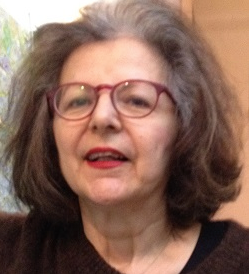Monika Fleischmann & Wolfgang Strauss
MEDIA ART AS THINKING SPACE
MONIKA FLEISCHMANN
"Monika Fleischmann is one of the leading pioneers in applications of virtual, mixed and augmented reality to art and culture. With her partner, Wolfgang Strauss, she founded Netzspannung.org ...", Kim Veltman, 2005, Virtual Maastricht McLuhan Institute
Monika Fleischmann, (b. in 1950 in Karlsruhe, Germany) is a distinguished research artist and media scholar celebrated for her groundbreaking contributions to media art. Initially studying fashion design in Zurich, Switzerland, her expertise is underlined by state diplomas in art and theater/performing arts from the Berlin University of the Arts, coupled with advanced training in computer graphics. Her extensive career spans diverse fields such as fashion design, art education, and broadcasting. Engaging with digital media since the mid-1980s, Fleischmann has emerged as a recognized authority in new media art.
In 1987, Fleischmann co-founded the first German research institute for digital media, art, science and technology, ART+COM ("The Billion Dollar Code") in Berlin. Her influential contributions to the field, such as virtual and mixed reality works, are underscored by her significant involvement in various research departments, including MARS (Media Arts ReSearch Exploratory Media Lab), at national research institutions such as the GMD German National Research Center for Information Technology and the Fraunhofer Research Association. Since 1987, she has collaborated with the architect Wolfgang Strauss on major research projects on intuitive human-machine interfaces and interactive media art, as well as on architectural projects. Most famous are "Berlin-Cyber City" (1989) and "Home of the Brain" (1989-91), probably the world's first virtual reality works. Liquid Views" (1992) - the virtual mirror of Media Narcissus - is arguably one of her most influential works. "PointScreen" (2003), a Minority Report HCI, is a groundbreaking invention for touch and touchless interfaces. "Semantic Map" (2001-04), a pioneering work in neural networks, now a standard in artificial intelligence data analysis. In 2004, the public interactive installation "Energy Passages" was presented for four weeks on the square in front of the Literaturhaus in Munich. The aim was to measure people's mood and energy to get a picture of the political and private world view of the newspaper and its readers. "Energy Passages" and "Semantic Map" illustrate strategies of interactivity using AI to "augment human intelligence". "The question is not whether machines can think, but whether people can still think when everything is automated." [link]
Fleischmann has received prestigious awards, including the Golden Nica for Interactive Art at the 1992 Prix Ars Electronica, the 2017 Female Inventor Award in Berlin, Germany, and at SIGGRAPH 2018 - The Distinguished Artist Award for Lifetime Achievement in Digital Art [link] & Member of the SIGGRAPH Academy class since 2018 [link] in recognition of her remarkable contributions to new media art. She is also the recipient of the 2023 eCulture Award from Anilla Cultural Montevideo, Uruguay.
Today she lives as an independent artist in Berlin, Germany and on Lake Garda, Italy. Together with Wolfgang Strauss, they are working on their archive for the ZKM |
Center for Art and Media and on the reconstruction of various pioneering works.
A book about their joint work together over the past four decades is also in the works, as is a film about their history as artists in a scientific environment with many inventions and a patent for capturing gestures in the air that was never realized, although there were various applications. It was only possible to patent it until 10 years after the invention, and then only in the United States. "There was a lack of technical understanding in Germany and Europe in the early days of digital media in the 1980s until today," she says. "Especially when the invention came from artists."
